-
 Bitcoin
Bitcoin $106,754.6083
1.33% -
 Ethereum
Ethereum $2,625.8249
3.80% -
 Tether USDt
Tether USDt $1.0001
-0.03% -
 XRP
XRP $2.1891
1.67% -
 BNB
BNB $654.5220
0.66% -
 Solana
Solana $156.9428
7.28% -
 USDC
USDC $0.9998
0.00% -
 Dogecoin
Dogecoin $0.1780
1.14% -
 TRON
TRON $0.2706
-0.16% -
 Cardano
Cardano $0.6470
2.77% -
 Hyperliquid
Hyperliquid $44.6467
10.24% -
 Sui
Sui $3.1128
3.86% -
 Bitcoin Cash
Bitcoin Cash $455.7646
3.00% -
 Chainlink
Chainlink $13.6858
4.08% -
 UNUS SED LEO
UNUS SED LEO $9.2682
0.21% -
 Avalanche
Avalanche $19.7433
3.79% -
 Stellar
Stellar $0.2616
1.64% -
 Toncoin
Toncoin $3.0222
2.19% -
 Shiba Inu
Shiba Inu $0.0...01220
1.49% -
 Hedera
Hedera $0.1580
2.75% -
 Litecoin
Litecoin $87.4964
2.29% -
 Polkadot
Polkadot $3.8958
3.05% -
 Ethena USDe
Ethena USDe $1.0000
-0.04% -
 Monero
Monero $317.2263
0.26% -
 Bitget Token
Bitget Token $4.5985
1.68% -
 Dai
Dai $0.9999
0.00% -
 Pepe
Pepe $0.0...01140
2.44% -
 Uniswap
Uniswap $7.6065
5.29% -
 Pi
Pi $0.6042
-2.00% -
 Aave
Aave $289.6343
6.02%
What to do if the ETH wallet address is lost? Recovery methods and prevention suggestions
If you lose your ETH wallet address, use your seed phrase or private key to recover it on a compatible wallet like MetaMask or MyEtherWallet.
May 13, 2025 at 12:42 am
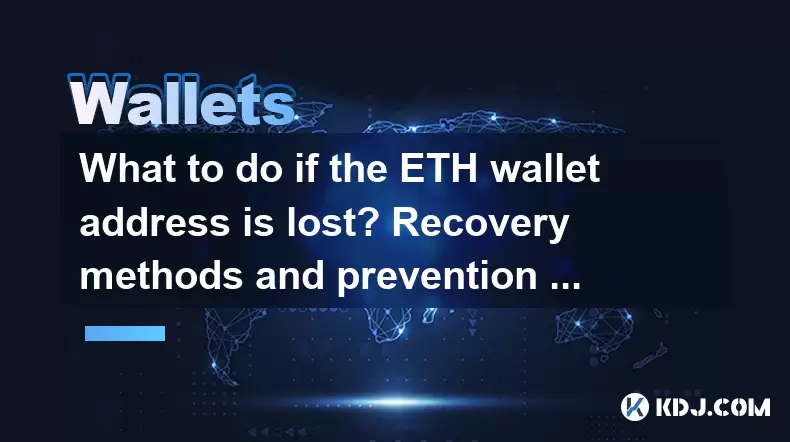
Losing an Ethereum (ETH) wallet address can be a distressing experience, especially if it contains significant funds. However, there are several recovery methods and preventive measures you can take to mitigate the risk and potentially recover your lost wallet. This article will guide you through the steps to recover a lost ETH wallet address and provide suggestions on how to prevent such incidents in the future.
Understanding ETH Wallet Addresses
Before diving into recovery methods, it's important to understand what an ETH wallet address is. An ETH wallet address is a unique string of characters that serves as a public identifier for your Ethereum account. It's used to receive ETH and other tokens on the Ethereum blockchain. Losing this address can mean losing access to your funds if you don't have the private key or seed phrase associated with it.
Recovery Methods for Lost ETH Wallet Addresses
Using the Seed Phrase
If you have the seed phrase (also known as the mnemonic phrase) associated with your lost ETH wallet, you can easily recover your wallet address. The seed phrase is a list of words that can be used to restore your wallet on any compatible platform. Here's how to recover your wallet using the seed phrase:
- Choose a compatible wallet: Select a wallet that supports seed phrase recovery, such as MetaMask, MyEtherWallet, or Ledger Live.
- Enter the seed phrase: When setting up the wallet, you'll be prompted to enter your seed phrase. Input the words in the correct order.
- Access your wallet: Once the seed phrase is verified, the wallet will generate your ETH address, and you'll regain access to your funds.
Using the Private Key
If you have the private key associated with your lost ETH wallet, you can also recover your wallet address. The private key is a long string of characters that gives you full control over your ETH funds. Here's how to recover your wallet using the private key:
- Choose a compatible wallet: Select a wallet that supports private key import, such as MetaMask, MyEtherWallet, or Trust Wallet.
- Import the private key: When setting up the wallet, look for an option to import a private key. Enter your private key carefully.
- Access your wallet: Once the private key is verified, the wallet will generate your ETH address, and you'll regain access to your funds.
Using Transaction History
If you don't have the seed phrase or private key, you might still be able to recover your ETH wallet address by examining your transaction history. This method is more complex and less reliable, but it can be a last resort. Here's how to attempt recovery using transaction history:
- Access a blockchain explorer: Use a blockchain explorer like Etherscan to search for transactions you've made from your lost wallet.
- Identify the sender address: Look for transactions where you were the sender. The sender address in these transactions is your lost ETH wallet address.
- Verify the address: Once you've identified the address, you can use it to access your wallet if you can find a way to import it into a wallet application.
Preventive Measures to Avoid Losing Your ETH Wallet Address
Securely Store Your Seed Phrase and Private Key
The most effective way to prevent losing your ETH wallet address is to securely store your seed phrase and private key. Here are some tips for secure storage:
- Write it down: Write your seed phrase and private key on a piece of paper and store it in a safe place, such as a locked drawer or a safe deposit box.
- Use a hardware wallet: Consider using a hardware wallet like Ledger or Trezor, which stores your private key offline and provides an additional layer of security.
- Encrypt digital copies: If you must store digital copies, encrypt them and store them on a secure device, such as an encrypted USB drive.
Regularly Back Up Your Wallet
Regularly backing up your wallet can help you recover your ETH wallet address if it's lost. Here's how to back up your wallet:
- Export your wallet: Use your wallet application to export your wallet data, which may include your seed phrase, private key, or a keystore file.
- Store the backup securely: Store the backup in a secure location, following the same principles as storing your seed phrase and private key.
Use Multiple Wallets
Using multiple wallets can provide an additional layer of security and help you recover your ETH wallet address if one is lost. Here's how to use multiple wallets effectively:
- Distribute your funds: Spread your ETH across multiple wallets to minimize the risk of losing all your funds if one wallet is compromised.
- Keep track of your wallets: Maintain a secure record of all your wallet addresses, seed phrases, and private keys.
Enable Two-Factor Authentication (2FA)
Enabling two-factor authentication (2FA) on your wallet can add an extra layer of security and help prevent unauthorized access. Here's how to enable 2FA:
- Choose a 2FA method: Select a 2FA method, such as an authenticator app or a physical security key.
- Set up 2FA: Follow the instructions in your wallet application to set up 2FA. This usually involves scanning a QR code or entering a setup key into your 2FA app.
- Verify 2FA: Once set up, you'll need to enter a 2FA code each time you access your wallet, adding an extra layer of security.
Frequently Asked Questions
Q: Can I recover my ETH wallet address if I only have the public address?
A: No, the public address alone is not enough to recover your ETH wallet. You need the seed phrase or private key to access your funds.
Q: Is it safe to store my seed phrase or private key digitally?
A: Storing your seed phrase or private key digitally is risky, but if you must do so, ensure it's encrypted and stored on a secure device. Physical storage is generally safer.
Q: What should I do if I suspect my ETH wallet has been compromised?
A: If you suspect your wallet has been compromised, immediately transfer your funds to a new, secure wallet. Change any associated passwords and enable 2FA if you haven't already.
Q: Can I use a password manager to store my seed phrase and private key?
A: While password managers can be secure, it's generally recommended to avoid storing your seed phrase and private key in them. Physical storage or hardware wallets are safer options.
Disclaimer:info@kdj.com
The information provided is not trading advice. kdj.com does not assume any responsibility for any investments made based on the information provided in this article. Cryptocurrencies are highly volatile and it is highly recommended that you invest with caution after thorough research!
If you believe that the content used on this website infringes your copyright, please contact us immediately (info@kdj.com) and we will delete it promptly.
- 2025-W Uncirculated American Gold Eagle and Dr. Vera Rubin Quarter Mark New Products
- 2025-06-13 06:25:13
- Ruvi AI (RVU) Leverages Blockchain and Artificial Intelligence to Disrupt Marketing, Entertainment, and Finance
- 2025-06-13 07:05:12
- H100 Group AB Raises 101 Million SEK (Approximately $10.6 Million) to Bolster Bitcoin Reserves
- 2025-06-13 06:25:13
- Galaxy Digital CEO Mike Novogratz Says Bitcoin Will Replace Gold and Go to $1,000,000
- 2025-06-13 06:45:13
- Trust Wallet Token (TWT) Price Drops 5.7% as RWA Integration Plans Ignite Excitement
- 2025-06-13 06:45:13
- Ethereum (ETH) Is in the Second Phase of a Three-Stage Market Cycle
- 2025-06-13 07:25:13
Related knowledge
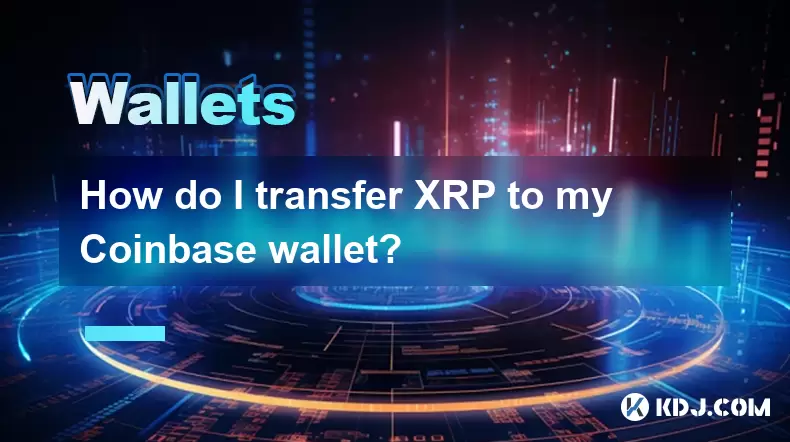
How do I transfer XRP to my Coinbase wallet?
Jun 16,2025 at 04:57pm
Understanding the Basics of XRP and Coinbase CompatibilityBefore initiating any transfer, it’s essential to confirm whether Coinbase supports XRP. As of recent updates, Coinbase has resumed offering XRP trading services on its platform after a period of uncertainty due to legal issues involving Ripple Labs. However, availability may vary depending on yo...

How do I deposit BNB into my Trust Wallet?
Jun 15,2025 at 03:56pm
Understanding BNB and Trust Wallet CompatibilityBefore initiating a deposit, it’s crucial to understand what BNB is and how it interacts with Trust Wallet. BNB (Binance Coin) is a utility token created by the Binance exchange. It can be used for paying transaction fees, participating in token sales, and more. Trust Wallet, on the other hand, is a mobile...
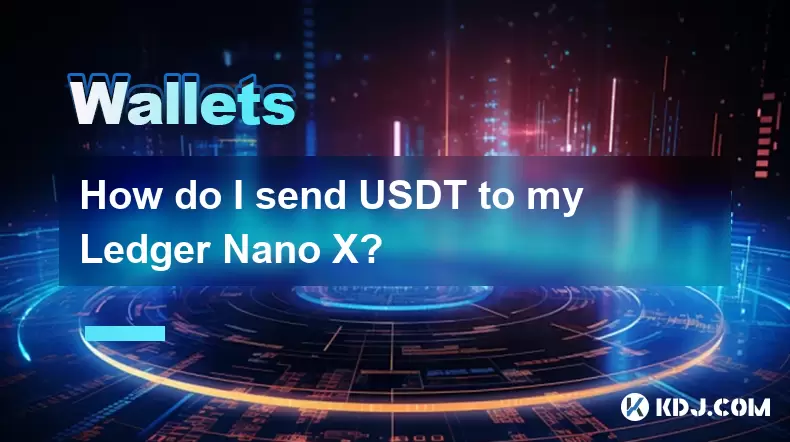
How do I send USDT to my Ledger Nano X?
Jun 15,2025 at 06:28am
What is USDT and Why Use Ledger Nano X?USDT, also known as Tether, is one of the most widely used stablecoins in the cryptocurrency ecosystem. It operates on various blockchain networks such as Ethereum (ERC-20), Tron (TRC-20), and others, offering users a digital asset pegged 1:1 to the US dollar. When it comes to storing USDT securely, hardware wallet...
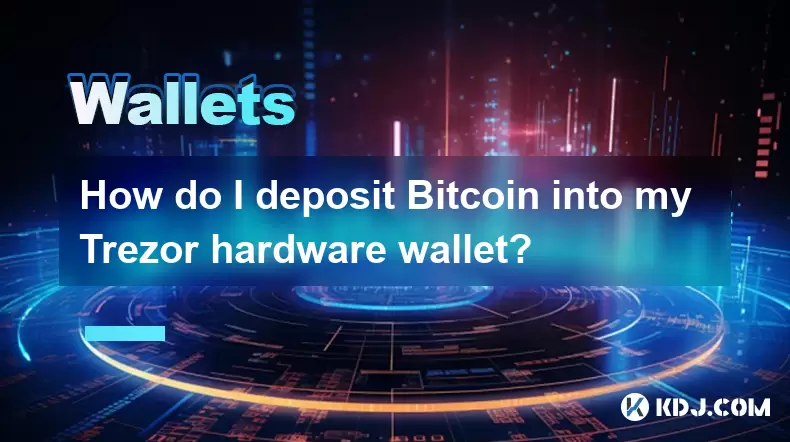
How do I deposit Bitcoin into my Trezor hardware wallet?
Jun 14,2025 at 12:29pm
What is a Trezor Hardware Wallet?A Trezor hardware wallet is a secure device designed to store cryptocurrencies offline, protecting them from online threats. Unlike software wallets, which are vulnerable to hacking and malware, Trezor stores private keys on the physical device itself. This ensures that transactions can only be approved by physically int...
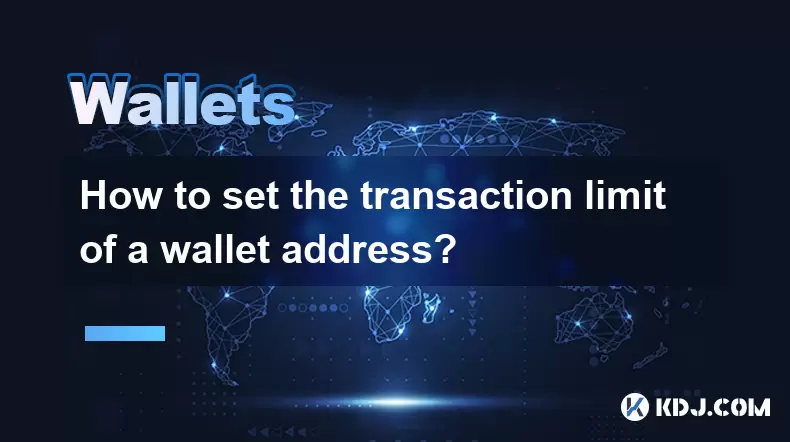
How to set the transaction limit of a wallet address?
Jun 16,2025 at 04:08am
Understanding the Concept of Transaction Limits in Cryptocurrency WalletsIn the cryptocurrency ecosystem, transaction limits refer to predefined restrictions placed on the amount of digital assets that can be sent or received by a wallet address within a specified timeframe. These limits are typically enforced by platforms such as exchanges, custodial w...
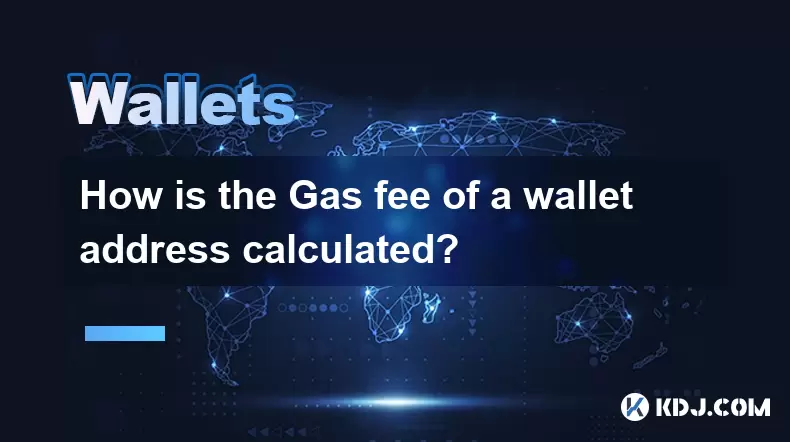
How is the Gas fee of a wallet address calculated?
Jun 14,2025 at 07:57pm
Understanding the Basics of Gas Fees in Blockchain TransactionsIn the cryptocurrency ecosystem, particularly within Ethereum-based networks, a Gas fee is an essential component of executing transactions or smart contract operations. The Gas fee serves as compensation for miners or validators who process and confirm transactions on the blockchain. It is ...

How do I transfer XRP to my Coinbase wallet?
Jun 16,2025 at 04:57pm
Understanding the Basics of XRP and Coinbase CompatibilityBefore initiating any transfer, it’s essential to confirm whether Coinbase supports XRP. As of recent updates, Coinbase has resumed offering XRP trading services on its platform after a period of uncertainty due to legal issues involving Ripple Labs. However, availability may vary depending on yo...

How do I deposit BNB into my Trust Wallet?
Jun 15,2025 at 03:56pm
Understanding BNB and Trust Wallet CompatibilityBefore initiating a deposit, it’s crucial to understand what BNB is and how it interacts with Trust Wallet. BNB (Binance Coin) is a utility token created by the Binance exchange. It can be used for paying transaction fees, participating in token sales, and more. Trust Wallet, on the other hand, is a mobile...

How do I send USDT to my Ledger Nano X?
Jun 15,2025 at 06:28am
What is USDT and Why Use Ledger Nano X?USDT, also known as Tether, is one of the most widely used stablecoins in the cryptocurrency ecosystem. It operates on various blockchain networks such as Ethereum (ERC-20), Tron (TRC-20), and others, offering users a digital asset pegged 1:1 to the US dollar. When it comes to storing USDT securely, hardware wallet...

How do I deposit Bitcoin into my Trezor hardware wallet?
Jun 14,2025 at 12:29pm
What is a Trezor Hardware Wallet?A Trezor hardware wallet is a secure device designed to store cryptocurrencies offline, protecting them from online threats. Unlike software wallets, which are vulnerable to hacking and malware, Trezor stores private keys on the physical device itself. This ensures that transactions can only be approved by physically int...

How to set the transaction limit of a wallet address?
Jun 16,2025 at 04:08am
Understanding the Concept of Transaction Limits in Cryptocurrency WalletsIn the cryptocurrency ecosystem, transaction limits refer to predefined restrictions placed on the amount of digital assets that can be sent or received by a wallet address within a specified timeframe. These limits are typically enforced by platforms such as exchanges, custodial w...

How is the Gas fee of a wallet address calculated?
Jun 14,2025 at 07:57pm
Understanding the Basics of Gas Fees in Blockchain TransactionsIn the cryptocurrency ecosystem, particularly within Ethereum-based networks, a Gas fee is an essential component of executing transactions or smart contract operations. The Gas fee serves as compensation for miners or validators who process and confirm transactions on the blockchain. It is ...
See all articles




























































